Time to start making soap!
We always try to plan to make enough soap to last at least through the end of the year based on our sales for the previous year and forcasted growth. I could probably win the lottery sooner then figure out just what soaps need to have plenty of shelf stock!
Our top selling soaps for 2006:
#1 - our signature original Spud Sack Soap
#2 - Huckleberry Bar Soap
#3 - Huckleberry Spud Soap
#4 - Tater Bar Soap
#5 - Pearberry Bar Soap
This has pretty much been the same lineup for the past 5 years.
Our first batch of soap since October was a restock of Pearberry Salt Spa Bar. This has avocado butter and oil, clay for slip, liquid silk and sea salt. Our mold is a dual cell mold so I like to make two batches at a time which seems to be more efficient use of our tools. Here is a picture of the mold we use. We use a recipe that yields a 90 bar batch. Theoretically this mold could produce 120 bars per cell, but I find it challenging to just lift the 90 bar soap block to the cutter.

The second batch is a reformulation of our Foot Tingler. The Foot Tingler had baking soda and powdered luffa with peppermint essential oil. Nancy really liked this soap for use on her feet. I kept the original formula and made it our third Salt Spa bar by adding sea salt and liquid silk along with juniper berry, rosemary and eucalyptus essential oils for antifungal and antiseptic properties. The essential oil blend is 5 parts peppermint, 1 part each of juniper berry, rosemary and eucalyptus.
Here are some pictures of the process for the "New & Improved" Fut Spa Bar.
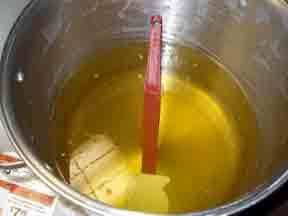
When I make soap I usually add most all my additives (colorant, essential oils, powdered luffa, baking soda) to my melted oils before adding the lye.
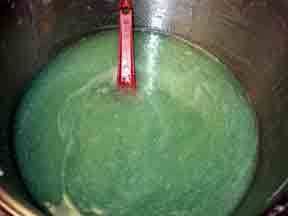
I should say that I usually mix my lye and water several hours before I make my soap. The lye solution is at room temperature when I mix it into my oils. Here I am taking a quick temp check on the oils. Depending on type of soap and the temperature both inside and outside, I mix the oils and lye water between 90 and 120 degrees. This batch was done at 120 degrees.
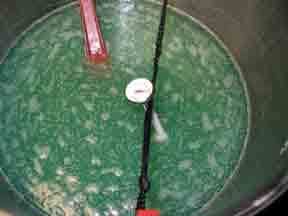
For the Salt Spa bars, I add the sea salt to my lye water right after I've mixed it up and have set it aside to cool. Most recipes I've seen pretty much call for an almost ounce for ounce ratio of sea salt to oils. Our batch uses 18 1/2 pounds of oils to which I add one cup of sea salt. Here is the oils with the lye/water/sea salt slurry added:
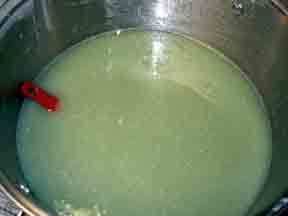
After the soap comes to light to medium trace, it is poured into one of the mold cells.

Since this is a salt soap, it will need to be cut sooner then our other cold processed molded soaps. So first thing in the morning I'll unmold and cut and will take more pictures to post of the unmolding, cutting and putting on the drying table.
The first soap I did this evening was Pearberry and this is it resting in the second cell. You may notice that I've placed a sheet of waxed butcher paper (wax side down on soap) on top of the soap. I've found that sometimes soaps will raise up in the middle from the gelling heat. By placing this sheet of paper on the top of the soap, it seems to greatly lessen or even stop the soap from cracking.
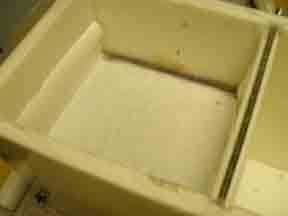
After filling both cells, we usually throw a blanket over the mold except for the hottest part of the summer when we use just a towel over the top.
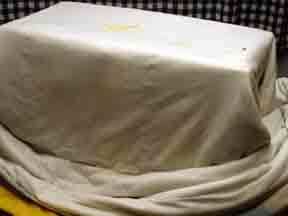
Well I'm off to bed now. Check back to see the results.


1 Comments:
Nice illustration of your soap making process. You almost have me inspired to make soap today.
Post a Comment
<< Home